Personalization Settings in Windows 10 allow the users to make quite a lot of changes to the computing experience. The users can personalize the Windows 10 desktop, theme, lock screen, window colors, and more. The look and feel of the Windows 10 experience can be totally customized with a wide range of settings. In this post, we will see how to personalize your Windows 10 desktop, theme, change the wallpaper, mouse settings, lock screen, window colors, etc. using the Personalization settings.
The beauty of the Windows operating system is that it lets you personalize and customize your computing experience to quite a large degree. Windows 10 goes further by making things even easier for you.
Personalization Settings in Windows 10
To open the Personalization Settings in Windows 10, click on Start menu > Windows Settings > Personalization. The Personalization settings window will open, and you will see several tabs or sections in the left pane.
- Background
- Colors
- Lock screen
- Themes
- Fonts
- Start
- Taskbar
In this post, we will learn more about all these settings and see how you can use these settings to personalize your computing experience.
1. Background
You can set the background to a picture of your choice or choose a solid color from the wide range of colors. You can also set a slideshow where you can choose the pictures for the slideshow and set the duration for every picture.

The ‘Choose a fit’ option determines how the background image fits on the screen with options such as fill, fit, stretch, tile, center, and span.
2. Colors
You can automatically choose an accent color from your wallpaper or turn the slider to Off and manually select a color for your window borders. You can show the same color on your taskbar by sliding the Show color on Start, taskbar and action center towards the On position on the right, or you could keep it at Off and show a gray taskbar. You can also opt for transparency here using the Make Start, taskbar and Action Center transparent slider.

You can choose your theme to light, dark, or choose the custom option. The custom option lets you choose your default windows mode and default app mode to light or dark. Turn on the Transparency effects to give the Taskbar that effect.
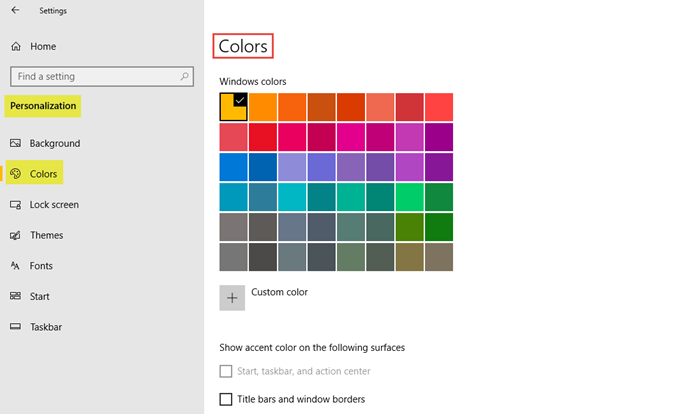
Pick up an accent color and choose whether to show on Start, Taskbar, and action center or Title bars and window borders.
3. Lock Screen
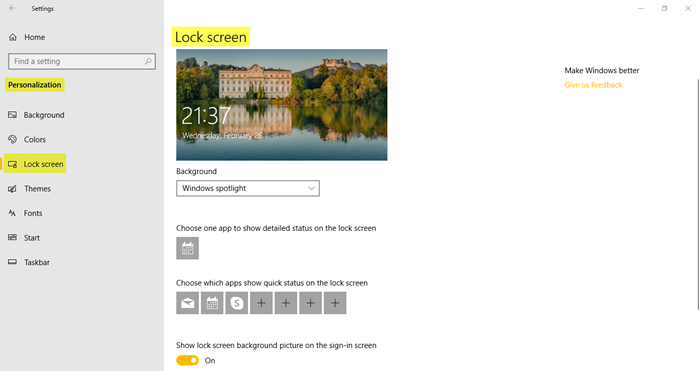
The lock screen is the screen that appears when you log off, lock, or put your PC on the sleep mode. In the Background drop-down menu, you can set it to a picture, windows spotlight, or a slideshow. You can further customize the lock screen by choosing which app to show detailed status on the lock screen, and also which apps to show quick status.
You can also set the Screen timeout and Screensaver settings here.
4. Themes
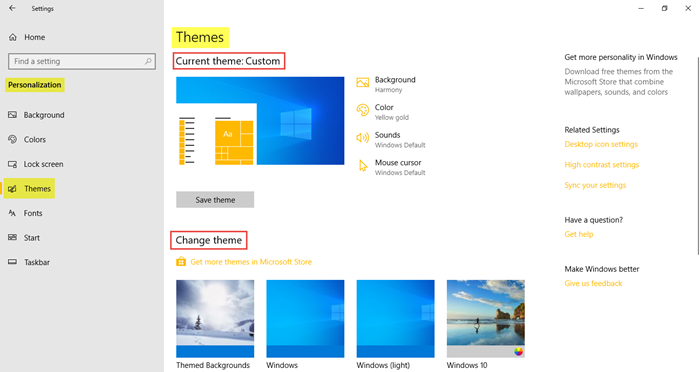
Themes comprise of a combination of the background, colors, sounds, mouse cursor, etc. You can select a suitable theme from a variety of themes available or you can choose to customize it as per your liking.
5. Fonts
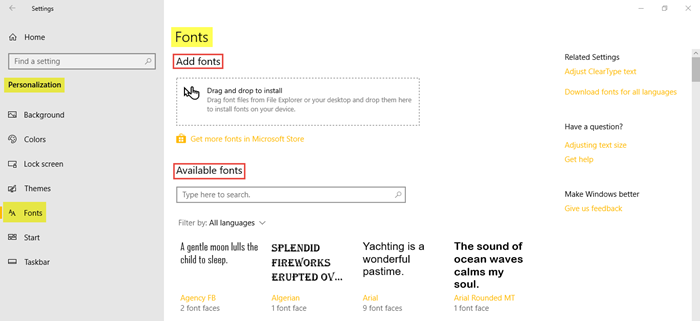
The Fonts tab will showcase a lot of different types of fonts for you to choose from. You can drag font files from File Explorer or desktop and drop them in the box shown at the top to install the fonts on your device. Click on Get more fonts in Microsoft Store and find more options available in there, some of which are paid. You can use drag and drop to install fonts easily here.
6. Start

In this section, you can personalize the Start menu completely by turning on or off the following options.
- Showing more tiles on Start
- Showing recently added apps
- Showing suggestions occasionally in Start
- Using the full Start screen
- Showing app list in Start menu
- Showing most-used apps
- Showing recently opened items in Jump Lists on Start or the Taskbar and in File Explorer Quick Access
You can also choose which folders appear on Start.
7. Taskbar
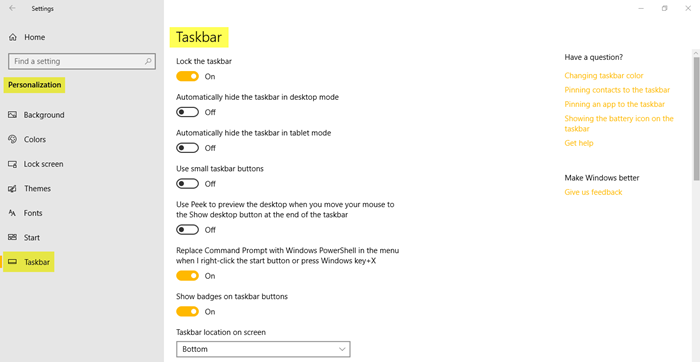
In the Taskbar section, you will find quite a lot of settings that determine the way the Taskbar is displayed on the screen. Use the Lock the Taskbar button to make sure that it does not disappear or move away from the screen.
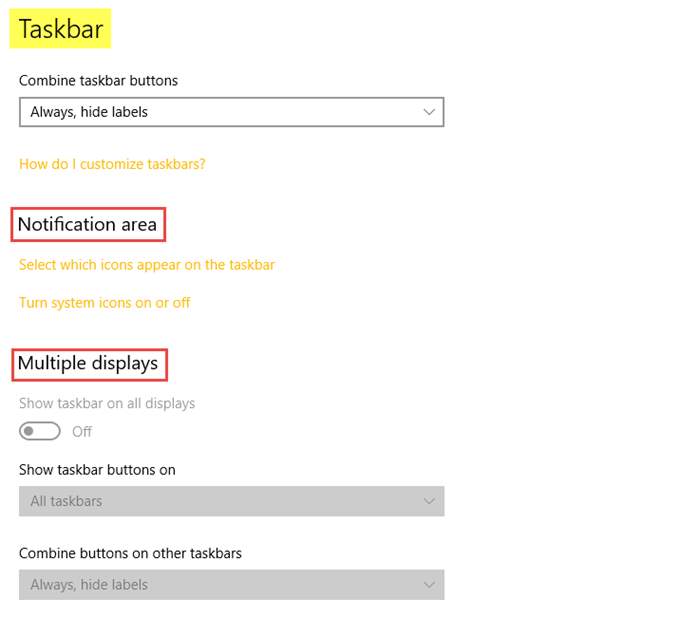
You can customize more settings such as the ones mentioned below.
- Automatically hide the Taskbar in desktop mode
- Automatically hide the Taskbar in tablet mode
- Use small Taskbar buttons
- Show badges on Taskbar button
- Show contacts on the Taskbar
- Choose how many contacts to show
- Show My People notifications
- Show Taskbar on all displays
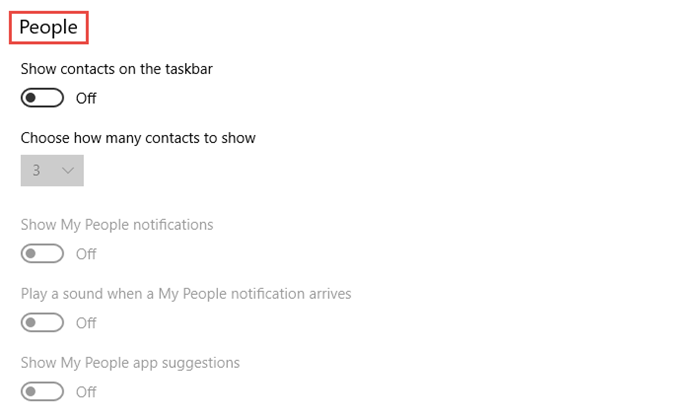
Go through all the settings and turned them on or off as required. You can also change the Taskbar location on the screen to left, right, top, or bottom of the screen.
Once you have made the desired changes to the settings here, you will see how your computing experience has been improved.
This covers all your Personalization Settings in Windows 10.Have fun personalizing your Windows 10 experience, and let us know if there is any specific setting you’d like to see the operating system offer.
NOTE: Stranded in Sonoma adds below in the comments.
Use the following command line to access all of the theme customizations:
control.exe /NAME Microsoft.Personalization /PAGE pageWallpaper
Cheers!